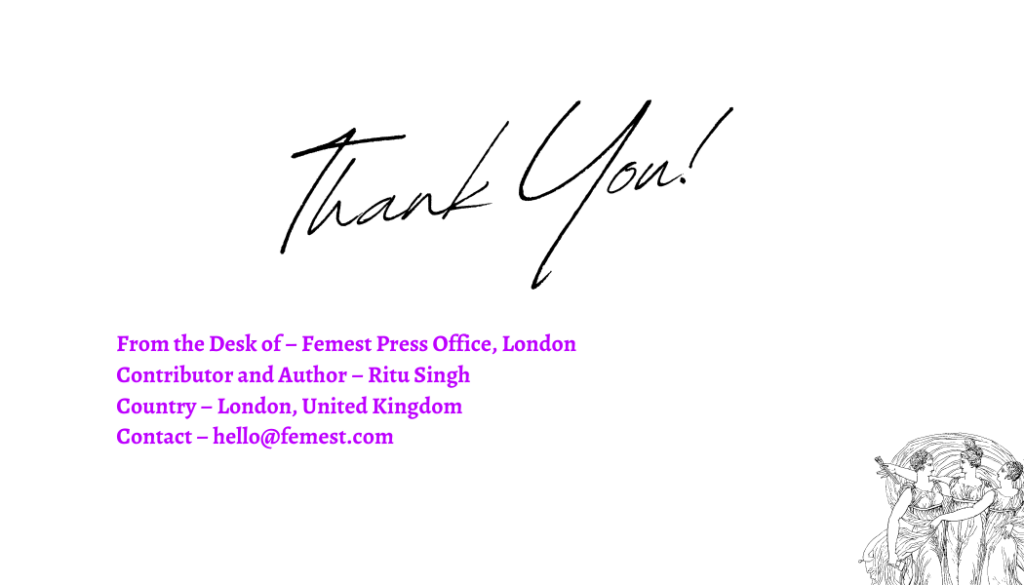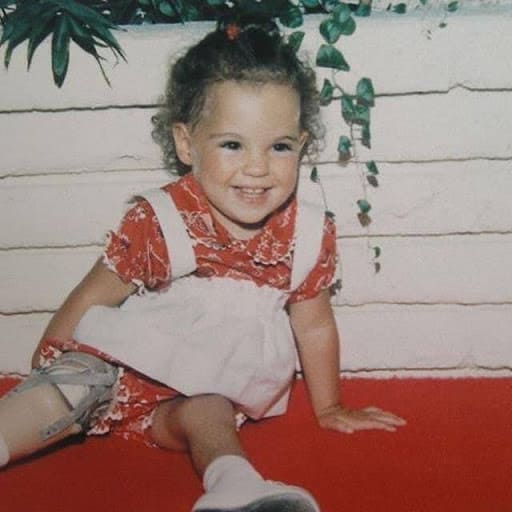Tami Luchow is redefining what it means to be seen and heard. As an artist, author, advocate, and changemaker, she transforms personal challenges into powerful conversations around disability, identity, and inclusion.
In this deeply personal interview, she shares how art became her activism, how stories became bridges and why inclusion isn’t a favor, but a fundamental human right. Her message is clear: “Don’t DIS us — join us.”
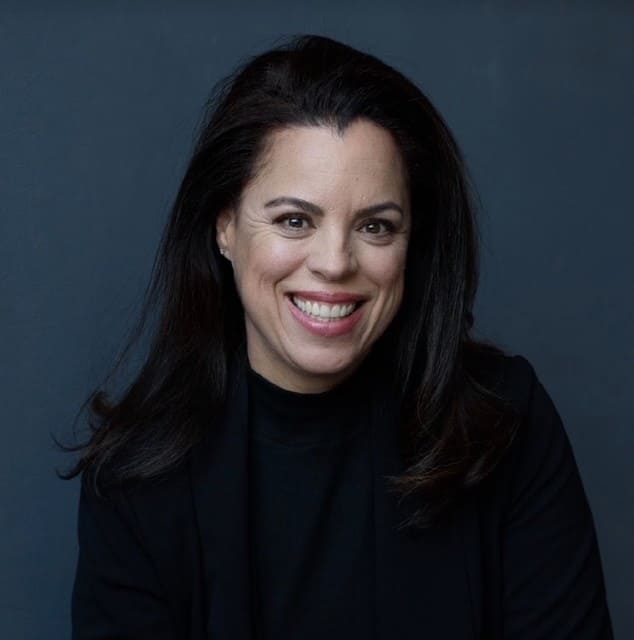
Photo Credit: Andrew French
Tami, you’ve defined yourself as an artist, author, advocate and speaker. Which role feels most central to your identity and why?
What a great question! The most important work I do always centers around fostering respect, care and compassion for people with visible and invisible disabilities, and their families, friends, caregivers and loved ones.
The specific role I play in sharing that message depends upon the medium, whether as an artist, author, advocate, or speaker. Still all of these roles are grounded in one core identity: being fully present in the moment as a human being, trying to reach just one other person so they may feel seen, heard, and valued. Overall, if I had to choose one role most central to my identity, it would be that of ‘changemaker’ which connects all aspects of my interdisciplinary life as it is mission driven and combines art, writing, advocacy, and speaking.
Born prematurely with a visible disability and later diagnosed with an invisible one, how did those layers of difference shape your sense of self growing up?
Growing up, I was aware that I was most often the only one in the room, the school, the camp, the public place, and in our family gatherings, with a visible physical disability. From an early age, I learned to turn people’s stares into teachable moments.
I learned to be ready with quick quips, to turn awkwardness into laughter, to find a way through the uncomfortable reality that most people given the choice will run away from when talking about, looking at, and dealing with things related to disability. In this way my sense of self became full of empathy toward all people for whom life is hard or different or difficult.
I have always had a deep interest in other people’s stories. In college I wrote my first children’s book The Same, But Different: One Little Girl’s Story About Growing Up With A Physical Disability. The title captures how I felt in a world where I didn’t see myself reflected. Though the book was rejected years ago, I plan to publish it in the future as it’s still relevant and necessary.
Today, THE DIS TOUR continues that sense of shared humanity by gathering and sharing people’s unique DIS STORIES with the world. And that underlying layered sense of a self that is different, is still there, because incredibly in this world of 5 billion, we are all truly unique, and that is what makes each and every one of our stories remarkable.
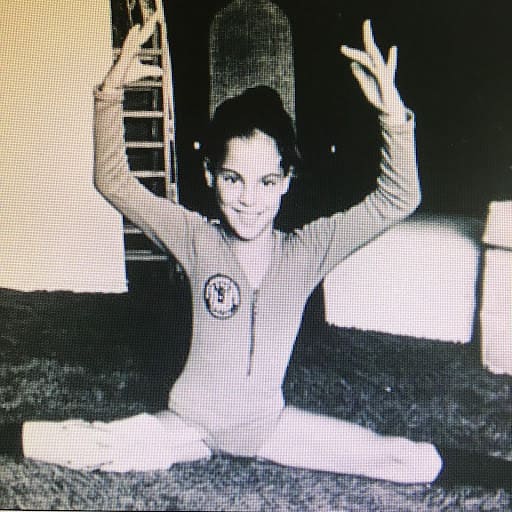
In launching DIS IS LIFE at Westbeth Gallery, what single message did you most want visitors to walk away with?
The main message I hope visitors of THE DIS TOUR leave with – remember guests won’t all “walk” away – some will wheel, others may hop, and others may crutch – hah I couldn’t resist – is one of community, hope, resilience, and understanding.
It is my hope that every person will feel this is a space where they are truly welcomed under a big tent. It’s a place to feel safe, to share their story with the world, and to believe that their voice matters. At its core, the installation invites everyone to live the message: “DONT DIS US JOIN US!”
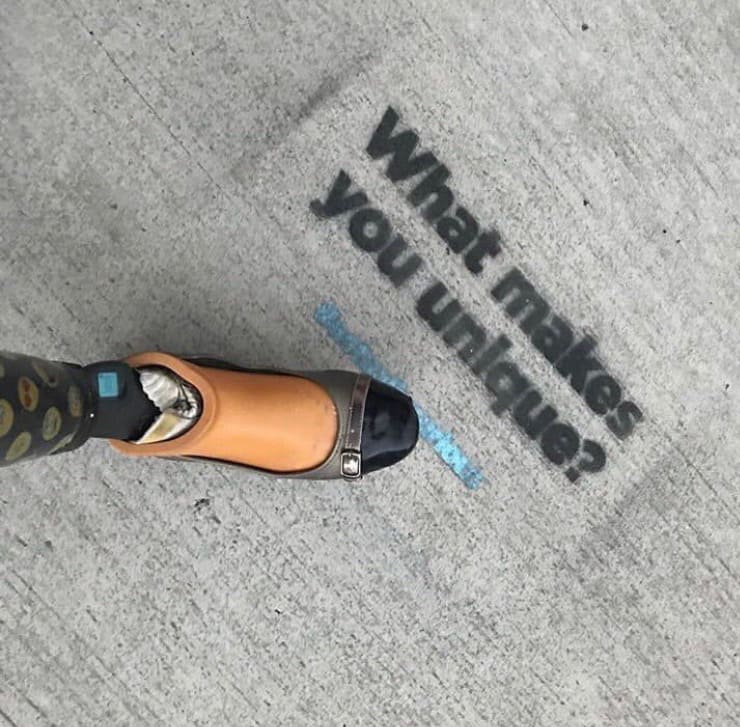
Your exhibit spans photography, sculpture, multimedia and interactive pieces. How did you decide which medium would best express each part of your story?
THE DIS TOUR is an installation that includes many pieces connected to healthcare, often encompassing found objects, items that people typically overlook or avoid. Some found objects are full of double meanings, while others lean to the abstract.
Each medium serves a unique function: some of the photographs are figurative, others more literal. And then there are works that deliberately push boundaries to spark conversation around invention, medical breakthroughs, and the ethics of care. Ultimately, the full exhibit is a space for those who have been marginalized, othered, excluded, misrepresented, and maligned to feel seen, heard, and valued. It’s about embracing differences and building community through art.
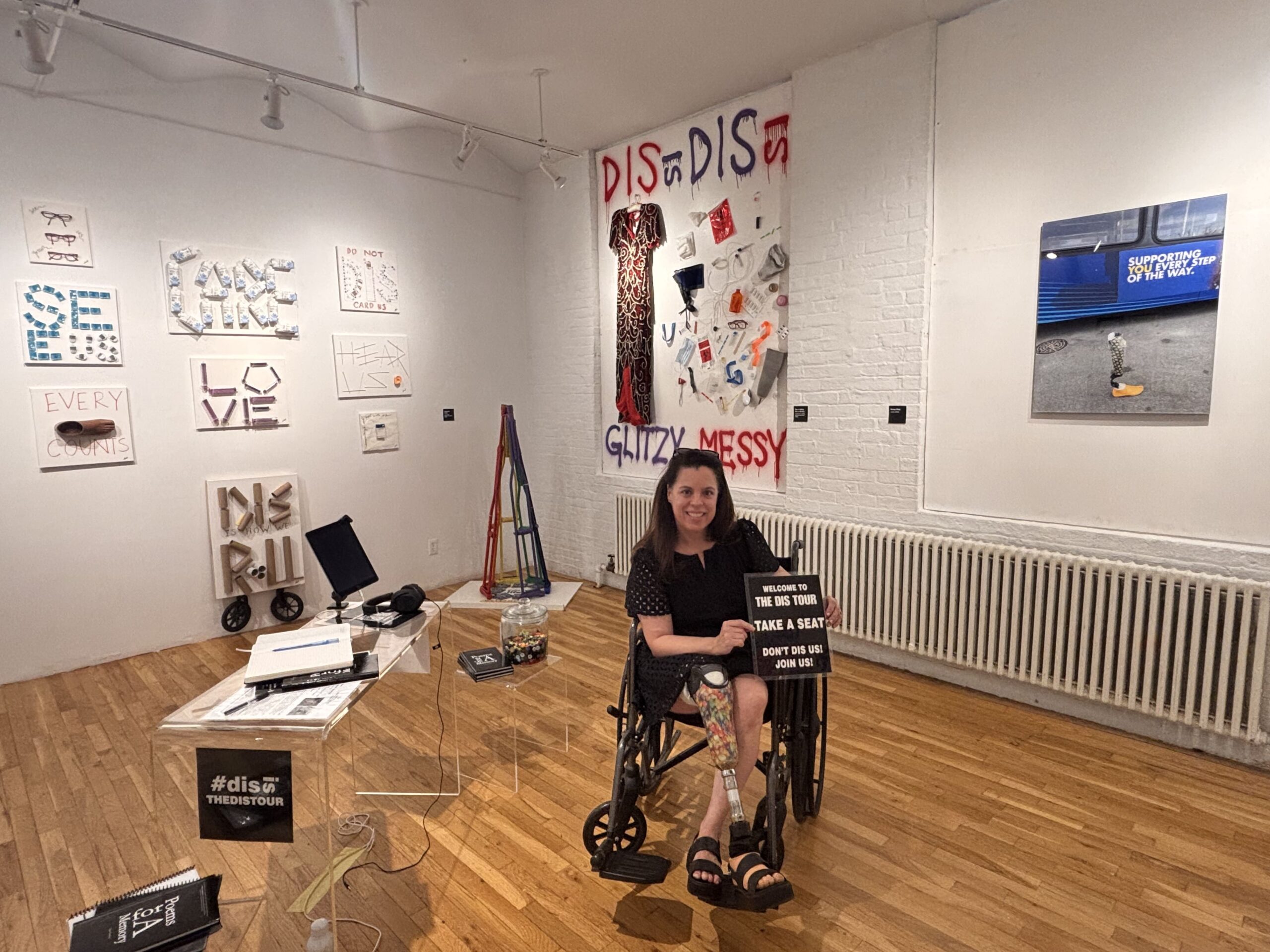
Tami Luchow, Westbeth Gallery
How did your experience as a journalist and ski racer shape the way you share your story today?
As a journalist, I’ve always been fascinated by people’s stories. That same instinct carries into THE DIS TOUR, which is built on collecting and sharing the stories of others through interactive installations that continue to grow as new people visit, sign up online, and contribute their stories. In fact, Femest readers can join right now. and become part of THE DIS TOUR today.
Ski racing, for me, has always been a metaphor for life. It’s not about the wins or the podiums, it’s about how you handle the crashes. Life is full of “yard sales” (as we call them in skiing): one minute you’re flying down the course, feeling great, and the next, you catch an edge, you’re off course, your equipment’s scattered across the mountain. You have to get up, gather yourself, and keep going.
THE DIS TOUR is a celebration of resilience that welcomes everyone: people with visible and invisible – disabilities, diagnoses, diabetes, cancer survivors, caregivers, the neurodiverse, those living with mental health conditions, and so many more things that life throws our way. We are neither heroes nor victims, we are keepers of the human condition, navigating a world we didn’t necessarily choose, with grace, grit, and beauty. Sharing that is the essence of the tour.
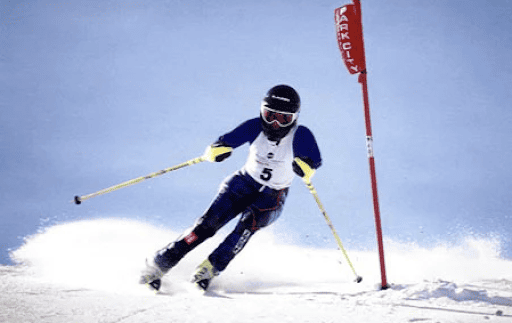

You’ve led workshops on representation, belonging and self‑care. Can you share a transformative moment or breakthrough you witnessed in one of these sessions?
In leading workshops on representation, belonging, and self-care, I feel deeply grateful for those aha moments when someone feels seen or heard in a way they did not expect. Often, people think this work is about “others,” when really it touches something more universal. I ask questions like:
Who are you in your life?
What matters most at work and at home?
Are you showing up for yourself meaningfully?
What part of your story has value for you?
What’s holding you back?
Who and what would you like to make space for?
When these questions are contemplated deeply and honestly, I get to witness sparks ignite, sometimes tears, sometimes a smile that lights someone from within. That’s impactful. As THE DIS TOUR evolves at Westbeth Gallery, I watch people walk in, make snap judgments, then slowly see something of themselves in a piece.
Then the alchemy works and they share a story from decades ago, or last week, that they never said aloud for fear, or sadness, or whatever they’re carrying, and then in the sharing they’re “transformed” to use your word.
It’s my hope that people reading our interaction today will have some of their own sparks ignite and they’ll reach out to bring THE DIS TOUR to their own community, because we are stronger together.
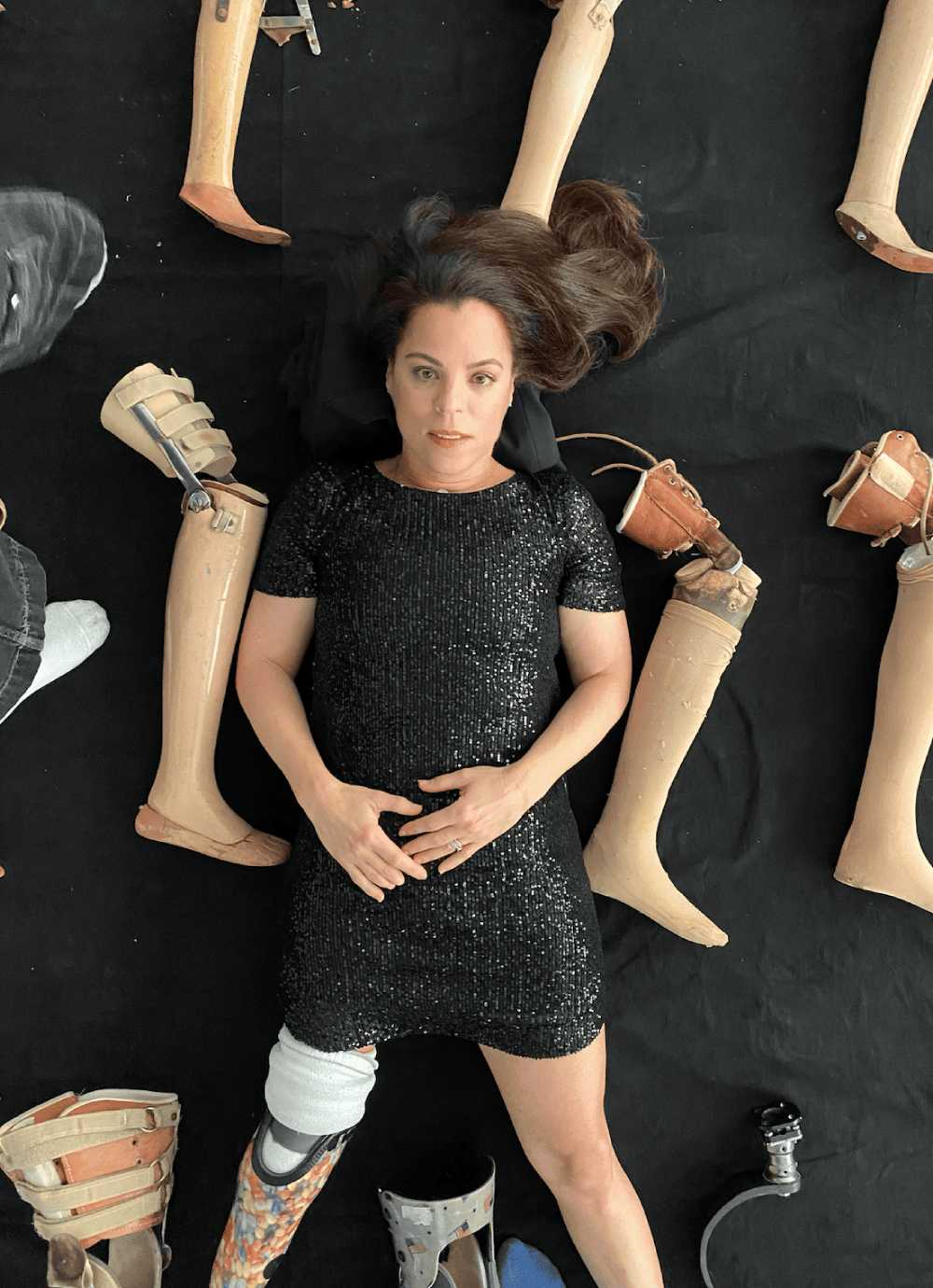
Photo Credit: Claudia Lewis
What has been one of the toughest personal or professional challenges you’ve faced and how did you move through it without losing your voice?
Powerful question. As someone born with a physical disability and written off at birth and then as someone whose life has continued to be full of challenges there is definitely more than one situation that comes to mind. For now, I’ll share this, and I hope readers understand, we are all a combination of our challenges and our experiences, and it’s how we keep going and doing the best we can on a given day that matters, and sometimes it’s as simple as just breathing.
One of the toughest challenges that I faced was much bigger than me and it occurred when my private United Healthcare policy had fine print that said something along the lines of “one limb per lifetime.” But that wasn’t the kicker, the fine print continued, along the lines of “from the age of 18 on, no maintenance, no repairs, no replacement of part.”
I went into overdrive because I was long past 18 and all I could think of was the babies being born, people surviving cancer and car accidents and everyone in the community of life whose health each day depends upon access to medicine, care, technology, therapy, durable medical equipment including and not limited to motorized wheelchairs, round the clock care, special medicine, new unicorn treatments, and so much more.
No one should have their lives dictated by fine print written by companies whose business model is literally to make money from denying care, denying claims, inserting fine print in policies that require appeals, and so much paperwork that people’s lives are negatively impacted – even lost – in the process.
Even while I was in physical and emotional pain from bleeding, blistering, limping, suffering, I used my voice. I went to Washington, launched petitions, started a nonprofit, and rallied others to fight for equitable healthcare.
It was exhilarating, and it was exhausting. At times, I felt completely alone. At others, powerfully connected. THE DIS TOUR continues that mission. Healthcare should be about health and care. Access and equity aren’t luxuries, they are human rights.
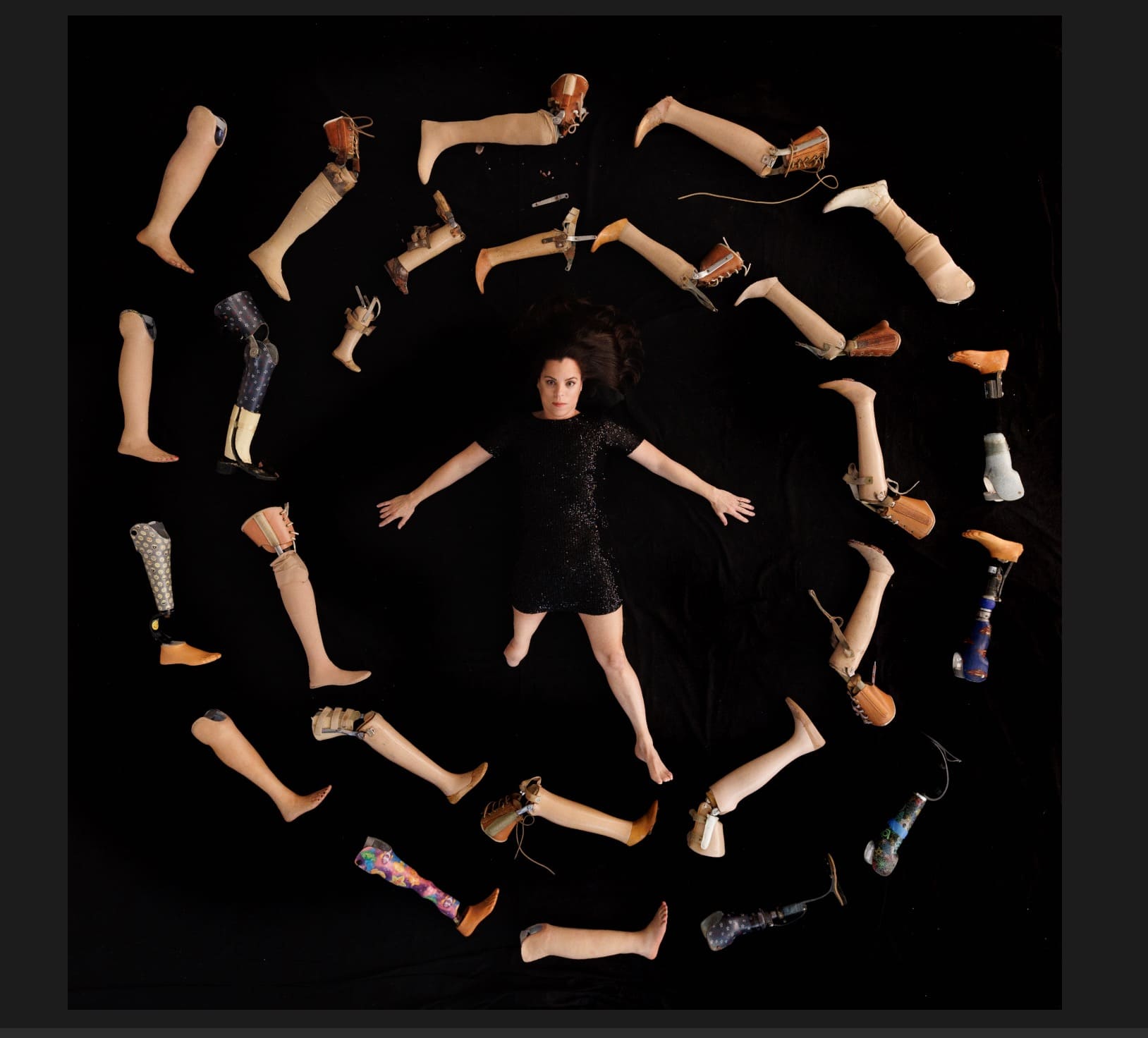
Photo Credit: Andrew French
Producer: Tami Luchow
In moments when the world didn’t see or support your full self, what kept you going?
In the hardest moments when I felt unseen, unsupported, or deeply alone, I’ve turned inward and drawn strength from my role models: people who endured challenges far greater than mine and still moved forward with purpose. I live in gratitude for those whose work and guidance from previous generations – our ancestors in the cause – still live on to strengthen all of us through difficult times.
Two of my guiding lights are Helen Keller and Dr. Martin Luther King Jr. Growing up, I didn’t see anyone who looked like me, so I looked to those who had persevered.
Helen Keller once said, “True happiness… is not attained through self-gratification, but through fidelity to a worthy purpose.” That line lives in me. I keep going because I hope my work might help just one child or adult feel seen and heard. And that would be enough.
When I feel like the world doesn’t value difference – when it shuts out voices like mine – I hold on to Dr. King’s words: “The time is always right to do what is right.”
I’m also carried by the legacy of countless others who came before me. Their courage sustains me and the world is a better place because of them.
As an advisor to C‑suites and HR teams, what’s the biggest misconception about disability inclusion in leadership?
One of the biggest misconceptions I encounter in my work as a leadership advisor and consultant is the idea that disability inclusion is a niche concern – or that it only applies to certain industries.
I often hear, “We’re B2B, not B2C, so this isn’t really relevant,” or “We don’t have the budget for this.” But here’s the truth: disability inclusion is always relevant – because workplaces are made of people. When employees feel safe, valued, and heard, they perform better. It’s not a B2B or B2C issue – it’s a human one.
Sometimes when I walk into a corporate room, people don’t know my background. They might wonder why a white woman from New York is visiting to talk about inclusion. That’s exactly why I start with a familiar phrase: “Don’t judge a book by its cover.” And the reaction I get can vary drastically – whether I’m wearing pants and my prosthesis is hidden, or a skirt and it’s visible. And that’s just the visible stuff. Many of us walk around carrying invisible conditions others know nothing about.
Disability inclusion is still the most marginalized piece of the leadership conversation. Yet people with visible and invisible disabilities exist across every demographic – race, gender, ethnicity, age, sexual identity, and beyond. In America right now, disability inclusion accounts for many different groups of people. Inclusion in leadership – and all employee roles – must include all of us.
One of my favorite moments came during a women’s history month event where I was the featured speaker. A man raised his hand at the end and said, “I almost didn’t come because it was a women’s thing. I’m so glad I did.” That’s the magic, to be breaking assumptions and opening doors.
With your memoir and upcoming podcast, what aspect of your experience are you most eager to explore next and why now?
The podcast is called A SEAT AT DIS TABLE (or DIS TABLE TALKS, in short) and is currently in production. I’m thrilled to share it. As I always say, there’s room to take a seat at the table and share your story. In fact, THE DIS TOUR literally includes a table and my own (wheel)chair with space for anyone who feels compelled to join the conversation. As we add new legs to the tour, my hope is that more people will join these discussions. I’m currently looking for sponsors, featured guests, and other types of support to make the podcast launch as robust and far-reaching as possible.
As for the memoir, I have been ambivalent about writing one. I’ve always felt more interested in other people’s stories than my own. But lately, more and more people have asked for mine. So I’m working to tell it in a way that’s not about self-importance, but about offering something useful that might help others navigate their own paths.
The working title is EVERY STEP COUNTS: One Step at a Time, just like the photo exhibit that features images of my leg from across the U.S. and around the world. Only one of those photos made it into the Westbeth Gallery kickoff of THE DIS TOUR. That larger body of work is still looking for a home.
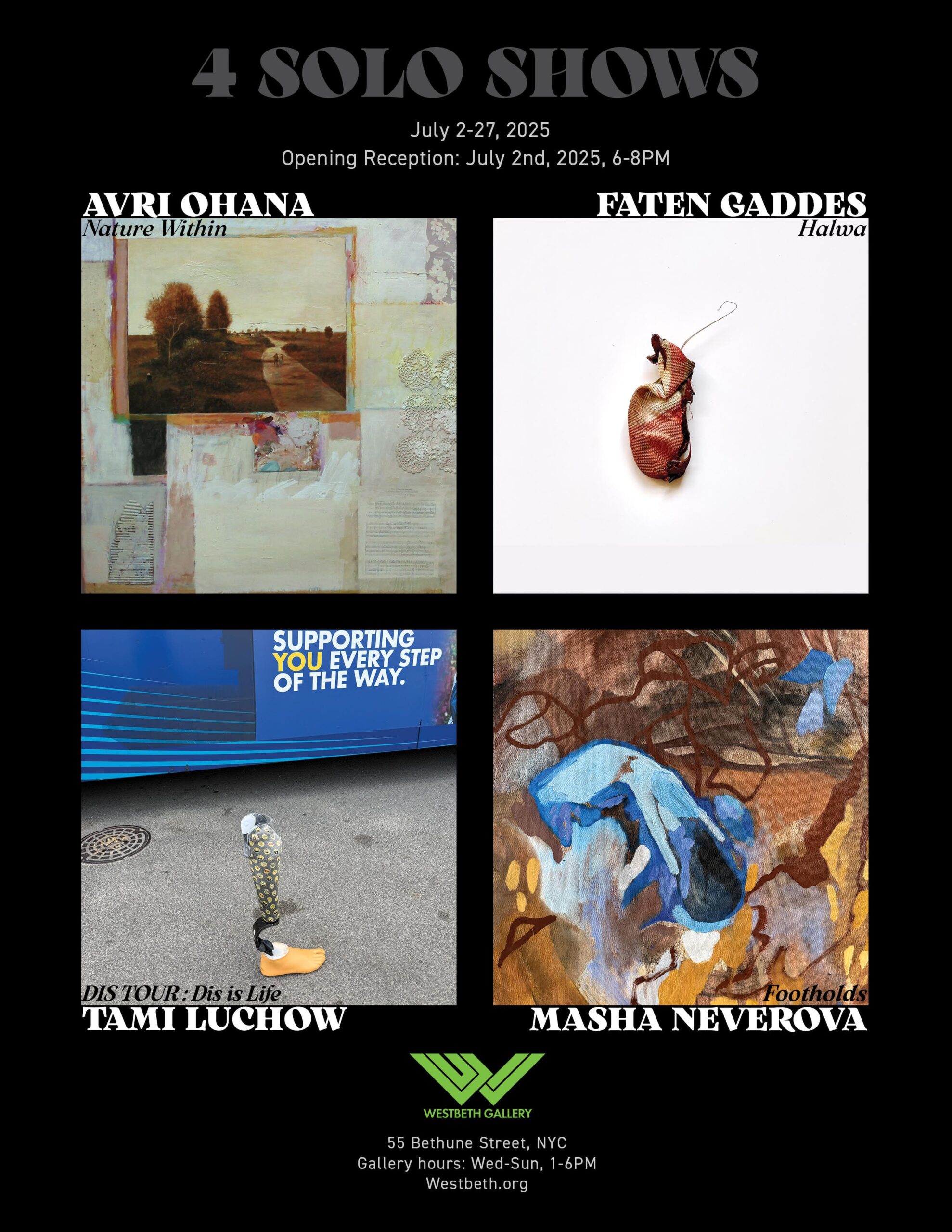
You’ve spoken internationally about visibility for marginalized communities.
Speaking internationally is an honor and I feel so fortunate with each opportunity that comes my way. What has resonated with me most is also what has moved me most: we are more alike than we are different.
Everywhere I go, people want to feel loved, cared for, valued, and represented. Sadly, I’ve also seen that many cultures, like our own, do not fully include their citizens with disabilities – whether visible or invisible.
That includes those navigating mental health, chronic illness, cancer survivorship, Parkinson’s, Alzheimer’s, neurodivergence, and so many more. Too often, people are pushed to the margins and forced to use back entrances, excluded from opportunities, or left without access. And yet, in these very same places, I’ve also felt an overwhelming shared humanity.
I’ll never forget speaking at Trinity College Dublin earlier this year. A young woman from a different background than my own cried as we spoke. We cried together. And I thought: Our tears are the same. Our blood is the same. No matter what language we speak or who we pray to, we are human first. That’s the insight I carry forward.
Your phrase “DON’T DIS US, JOIN US!” is powerful. How can people who haven’t thought much about disability start engaging in a real, respectful way?
Wow! I’m so happy you asked this question because just yesterday a person visited THE DIS TOUR and took in the room, the messages, the space, and then she asked me if she could write something on the “What is your superpower?” interactive piece of art that wasn’t her superpower – and rather a new message to share – because the phrase you mention above really resonated with her.
I said of course and I watched her write, “We are you. You are us.” And I got the chills, because I knew at that moment that at least one person engaged with the community of people with disabilities in a way that encompasses empathy most of all.
People can start connecting when we all start with love and care and those two are the basis for empathy. No one chooses life with a disability, and yet no one knows what will happen next, whether by diagnosis, by accident, by birth, by living life into our older years, sometimes disabilities – visible and invisible – happen.
Realistically, most people’s lives are connected to someone who is living a life with some sort of visible or invisible disability. It is my hope that after being part of THE DIS TOUR people will choose to join and find a way to welcome the mission into their communities, their companies, and their lives, I am here and open to ideas!
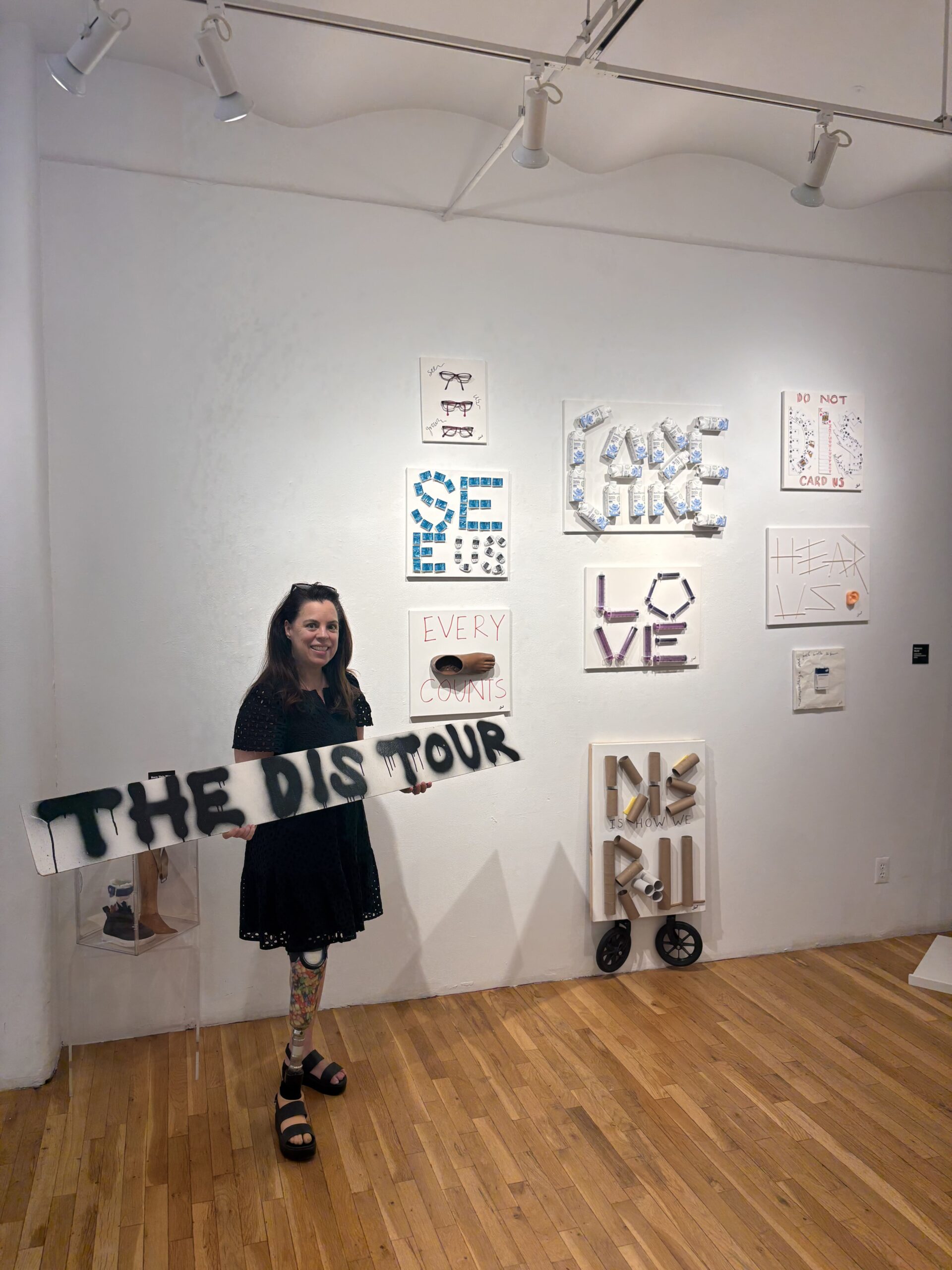
Tami Luchow, Westbeth Gallery
You founded the nonprofit Care for Life and Limb, which is currently on hiatus. What did you learn in that process and might the nonprofit return in a new form?
Care for Life and Limb is still incredibly close to my heart. Its mission remains just as urgent, maybe even more so today.
Founding and running a nonprofit taught me how much it really does take a village. I’m forever grateful to those who joined the cause by donating time, money, expertise, or simply sharing their stories. It was a collective effort powered by people who truly cared. After years of hard work, it took a real toll on me physically and emotionally. I had to listen to my body and to the professionals and I needed to pause.
I would love to bring CFLL back in robust form and help it live, breathe, and grow to do the work that is so vital to building pathways toward equality and equity in healthcare and access to care for people with disabilities – visible and invisible – and their families, caregivers, friends and loved ones. We are all in this together and healthcare should truly be about health and care, as we see embodied in the art installation now in THE DIS TOUR.
When people look back on #THEDISTOUR, what do you hope they remember most?
Hold on! We’re just getting started! I hope people continue to look forward with us, as we bring #THEDISTOUR to new cities, new stories, and new communities.
But if people do look back, I hope they remember that every person with a visible or invisible disability, and every family member, caregiver, friend, and ally deserves to be seen, heard, valued, and loved. We’re all in this together.
A special thanks to Valerie Hallier, Manager at Westbeth Gallery, and the Westbeth Community, for welcoming the work that is THE DIS TOUR. It’s been wonderful to be included with such artists as Avri Ohana, Faten Gaddes, and Masha Neverova.
And to the Femest community: thank you for connecting today. I’ll leave you with the final lines from the last poem in my first published book, Poems for a Memory titled Will You Join The Circle?:
“The circle I ask you to join will only be complete with you in it. There’s room, and all voices are necessary. We can do it, we can complete the circle together.”
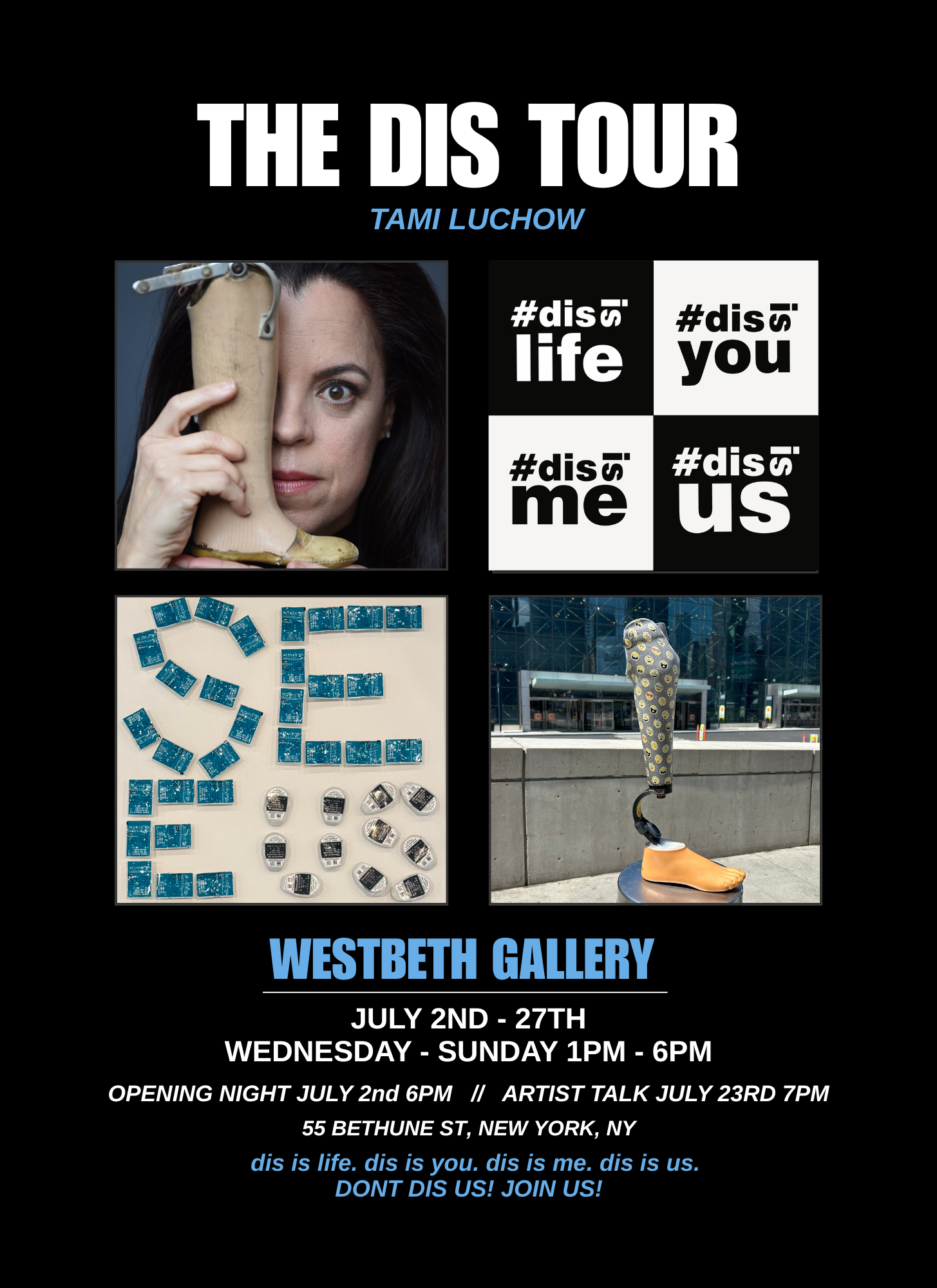
CONTACT TAMI LUCHOW:
Email
Instagram
website
LinkedIn
